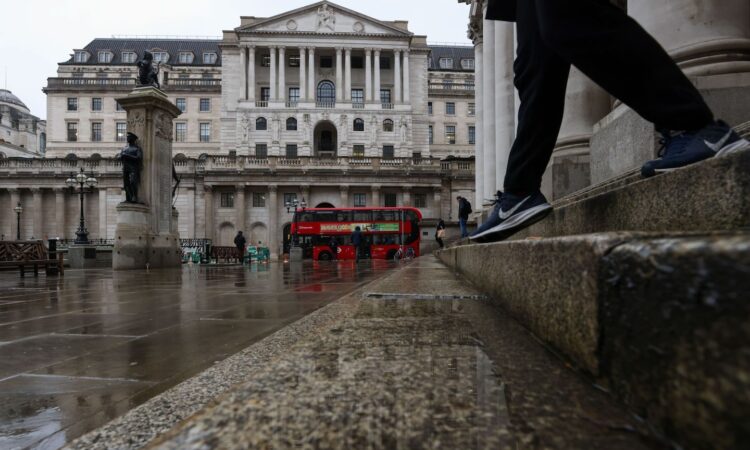
The BOE was the first major central bank both to increase rates and to start reducing its quantitative-easing stimulus. It was also the first mover in actively selling its QE bond holdings back into the secondary market. The UK should blaze a trail again by calling time on further action after tightening at 10 consecutive meetings — but combine its a pause-for-now message with one final half-point increment to show it’s not going soft on inflation.
It’s going to be a tricky decision, with the nine-member Monetary Policy Committee is as divided as it ever has been. The last three MPC meetings have had three-way voting splits. Some policymakers have highlighted the risk of under-doing tightening, which may result in the bank being forced into a second wave of hikes, while others are more fearful about triggering an unnecessarily sharp economic contraction.
A pause, after this next hike, could serve to bring the differing views of the MPC closer. Two members voted for no change at the last meeting, though the majority swung behind a half-point hike. Another voted for a 75 basis-point move. Money markets price in only about an 80% chance of a move to 4% this week, and traders are even starting to look for rate cuts by the end of the year. That won’t please the MPC, which has had the reverse problem up to now of trying to rein in wild expectations for much higher interest rates; the futures market currently anticipates a peak of 4.4% in June, down from bets for 6.25% that were being laid in September. So the outlying risk is for just a quarter-point move Thursday that keeps the hiking cycle alive.
It helps that the Federal Reserve is also contemplating how much further it can realistically raise interest rates, and is likely to restrict itself to a 25 basis-point hike this week. Though the European Central Bank is being forced into sounding hawkish about repeated half-point moves, that’s largely because it was so late to act in the first place. The Bank of Canada has laid the groundwork for less central bank activism, with its 25 basis-point move last week combining with guidance that it will pause for now. It emphasized a bias to tighten; expect that to become the template for many central banks before too long. The Norwegian and Australian central banks have also slowed down the pace of tightening.
This week’s BOE meeting also includes the bank’s quarterly review. There has been precious little growth in the UK for much of the past year, but the bank’s expectations that a recession started late last year may now be corrected to show a modicum of growth. Whisper it, but we might see a shift to a glass half-full view from the UK central bank; any revisions to unemployment and wage forecasts will probably give the most pertinent insights into what comes next for monetary policy.
Consumer prices soared by 11.1% in October, but slowed to an annual pace of 10.5% in December. That is not enough progress for the MPC to feel enough has been done, especially with private sector wages rising at an annual 7.2% pace. Nonetheless, BOE Chief Economist Huw Pill has highlighted that the BOE expects inflation to fall swiftly in the second half of his year; while Governor Andrew Bailey said recently he’s hopeful that a corner has been turned.
The MPC will have an eye on the upcoming budget from Chancellor of the Exchequer Jeremy Hunt due on March 15. The most important variable is what the government does with relief on household energy bills; if it renews the current cap after April, that would shave about 2.2 percentage points off inflation, according to Bloomberg Senior UK Economist Dan Hanson. The reduction in consumer prices will be halved if bills are allowed to rise by as much as the government has recently suggested it’s considering.
After 10 consecutive rate hikes, this interest-rate raising cycle is close to achieving its objective. There ought to be no psychological barrier in pausing to assess how pervasive effective the sharpest tightening of financial conditions for decades is proving to be. Central banks know there is a lag of many months until the effect of any monetary policy change. Furthermore, reducing the stockpile of bonds accumulated during QE is a step into the unknown in how liquidity throughout the financial system will react. Time for UK policymakers to circle the wagons at 4%.
More From Bloomberg Opinion:
• Why the Fed Should Raise Rates 50 Basis Points: Mohamed El-Erian
• How the Federal Reserve Should Talk About Inflation: Editorial
• Central Banks Should Put Growth Before Pride: Marcus Ashworth
This column does not necessarily reflect the opinion of the editorial board or Bloomberg LP and its owners.
Marcus Ashworth is a Bloomberg Opinion columnist covering European markets. Previously, he was chief markets strategist for Haitong Securities in London.
More stories like this are available on bloomberg.com/opinion





